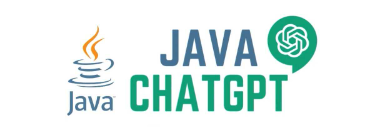ET Year-end Special Reads
ALSO READ: Inside the EB-5 visa lifecycle: From initial investment to green card approval
The January 2025 Visa Bulletin warns EB-5 investors of potential visa backlogs in rural and high-unemployment area (HUA) set-aside categories. While currently "current," growing demand could lead to delays. Investors are urged to act quickly to secure priority dates and queue positions.
(Join our ETNRI WhatsApp channel for all the latest updates)
Legal Ramifications of Visa Retrogression
Visa retrogression creates significant legal hurdles for EB-5 investors, especially those currently in the U.S. on H-1B or F-1 visas. Even with an approved I-526E petition, retrogression can delay key milestones in the immigration process.ALSO READ: Why the US economy can't do without foreigners on H-1B visas
Loss of Concurrent Filing Benefits
If a cut-off date is established, investors lose the ability to file their Adjustment of Status (AOS) application (I-485) at the same time as their I-526E petition. Without concurrent filing, they also lose access to crucial interim benefits from AOS, including:- Work Authorization (EAD) — The ability to work freely in the U.S. without employer sponsorship.
- Advance Parole (AP) — The ability to travel internationally without jeopardizing visa status.
Child Age-Out Risks
The Child Status Protection Act (CSPA) allows dependent children’s ages to be "frozen" at the time of filing an AOS. However, if retrogression delays the ability to file AOS, children who turn 21 before filing could "age out" and lose eligibility for a green card as dependents. For many families, this is one of the most critical risks of retrogression.ALSO READ: TCS, Infosys & other Indian-origin tech firms corner 1/5th of H-1B visas issued by US
Delayed Conditional Residency
Investors face delays in receiving their conditional green card, which extends the timeline for obtaining full U.S. permanent residency. Without a conditional green card, investors may remain in a state of uncertainty for longer periods.Increased Risk for H-1B and F-1 Visa Holders
For investors already living in the U.S. on H-1B or F-1 visas, retrogression adds another layer of risk. Without the ability to file AOS concurrently, their residency status remains tied to their current visa. This means:- Loss of Work and Travel Benefits — Without EAD and AP, they rely solely on their existing H-1B or F-1 status for work and travel.
- Risk of Losing Status — If an H-1B holder loses their job or an F-1 student’s status expires, they must leave the U.S. or scramble to secure a new visa.
How to Mitigate These Risks
Acting before cut-off dates are established is the most effective strategy to avoid these issues. Filing I-526E petitions early allows investors to lock in priority dates and retain access to AOS, EAD, and AP benefits. For families with dependent children nearing 21, early action is critical to avoid age-out risks.
Demand vs. Visa Supply
Recent data reveals an intense demand for EB-5 visas, especially in set-aside categories:- 7,000+ I-526E petitions were filed from April 2022 to July 2024.
- For FY 2025, the total visa allocation for rural, high-unemployment, and infrastructure projects is 6,839 visas.
The ripple effect of this landscape in the HUA category is that it will inevitably lead to an EB-5 waiting list for the EB-5 HUA, and it is likely to apply to countries like India, China and Vietnam as seen in the past.
Critical Actions for Investors to Protect Themselves
To mitigate the risks of retrogression, EB-5 investors should act promptly:File Early: Submit your I-526E petition now to secure a priority date while rural and HUA categories are current.
Use Concurrent Filing: U.S.-based investors can file I-526E and I-485 together, gaining interim benefits like work authorization (EAD) and travel permits (AP). Filing early preserves these benefits even if cut-off dates are introduced later.
Explore Staggered Investment Programs: Options like USIF’s Staggered Investment Plan allow filing with partial funding of $200,000, securing a priority date while arranging the remaining investment over a period of 6 months.
Seek Legal Guidance: Immigration attorneys can help navigate filing timelines, address CSPA concerns, and ensure compliance, especially for H-1B and F-1 holders.
The growing popularity of EB-5 set-aside categories makes visa waiting lists in 2025 increasingly likely. A surge of I-526E petitions is expected by Q2 2025, with demand driven by investors from countries like India and China. India's currency exchange controls allow new exchanges starting in April 2025, potentially accelerating EB-5 investments.
(Catch all the Business News, Breaking News, Budget 2024 Events and Latest News Updates on The Economic Times.)
Subscribe to The Economic Times Prime and read the ET ePaper online.
Read More News on
(Catch all the Business News, Breaking News, Budget 2024 Events and Latest News Updates on The Economic Times.)
Subscribe to The Economic Times Prime and read the ET ePaper online.









































 Get Unlimited Access to The Economic Times
Get Unlimited Access to The Economic Times
